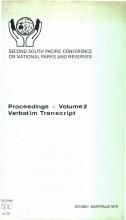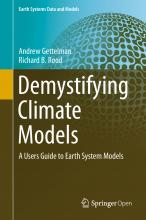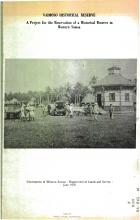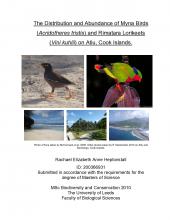The distribution and abundance of an invasive species: the common myna (Acridotheres tristis) on Atiu, Cook Islands


Biodiversity Conservation, BRB
Available Online
An invasive alien species are known to cause significant economic and environmental damage. Islands are much more vulnerable to the invasion of invasive alien species, and have higher rates of extinction. In the islands of the South Pacific, there are several species Polynesian land birds which are threatened with extinction due to invasive alien species and human interference. Without any intervention from humans, it is likely that these birds will suffer extinction in the next few decades. The island of Atiu in the Cook Islands (South Pacific) supports a range of avian fauna. In 2007 the Rimitara lorikeet (Vini kuhlii), also known locally as the Kura was introduced to Atiu, to make a reserve population, as there were only approximatley 1000 left on the island of Rimitara, French Polynesia. There is concern for this species on Atiu due to the existence of the common myna (Acridotheres tristis). The myna is an aggressive invasive which is one of the worlds worst 100 invasive species. It was introduced to the Cook Islands by the government, with the intention to control the coconut-stick insect (Graeffea crouani), but is now a pest itself. A myna control programme on Atiu is being coordinated and controlled by Gerald McCormack (Cook Islands Natural Heritage Trust), working through George Mateariki, and using funding from various conservation organisations. Poisioning is being carried out by George in order to reduce myna numbers, and a bounty has been set on the birds or for every right foot so that the locals can help as much as possible. This investigation aimed to estimate the total population size on the island to use as a starting count to determine whether the programme is successful or not. Two methods were used which included roost counts to find an estimate of the population, and a transect method using a Distance programme to estimate the number of birds per hectare as well as the level of abundance in various habitat types. The two methods had overlapping results, giving a total estimated range of 3250 to 8460 birds on the island, although it is more likely to be at the higher end of this estimate at around 6000 to7000 birds. Further investigation will need to determine any change in the population size, any changes in habitat composition as well as the impact on the native species, especially the effect on the Kura and its population size.









